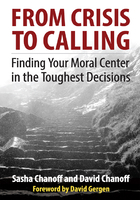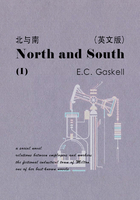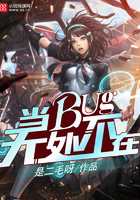Skillfully Problem Solve
My grandfather was a cheery old guy, despite all the hard times he'd lived through—the Depression in the 1930s, two World Wars, working at odd jobs from early morning until after dark because his small farm couldn't support his large family, the death of two wives, and more. He'd gained a lot of practical intelligence from his many life experiences. He would tell us stories about difficulties he'd trouble-shooted on jobs, on his farms, and with people.
Grandpa came to live with us when I was a boy. If some difficulty arose, he'd shake his head and say, “Yup, life is one darned thing after another.” Then he'd say, “Let's see what we can do to remedy this.”
The second level of resiliency to master is based on research showing that people who focus on solving the problems they encounter are much more resilient than people who disengage, feel helpless, or become highly emotional. When you are hit with a setback or unexpected difficulty, it is in your best interests to focus on dealing effectively with the challenge. People who become highly emotional in the middle of a crisis do not cope well with adversities.
Pioneering research conducted by psychologist Richard Lazarus established that effective coping includes both emotion-focused coping and problem-focused coping.[1] The connection between a problem-solving response and resiliency has been confirmed many times. Research conducted by Mary Steinhardt at a division of the Motorola corporation found that employees who use problem-focused coping in a constantly changing work environment are more resilient, have good relationships with others, and enjoy better health. Steinhardt's study also confirmed that the least resilient people do not cope well with their unhappy feelings, believe their jobs are full of stress, and have more illnesses.[2]
Let's look closer at the issue of expressing feelings. In the previous chapter on Level One resiliency, the ability to express feelings of distress was described as an important health-enhancing activity. If that is true, why are emotional reactions now described as counterproductive? According to psychologists Annette Stanton and Robert Franz, it is poor timing, amplification of feelings, and disengagement that can make emotional reactions maladaptive. When hit by a crisis, some people disengage from the challenges at hand by amplifying their emotional reactions. It isn't that reacting emotionally is wrong; they just do it at the worst possible time in the worst possible place. Some people react in dramatic, attention-getting ways at the slightest opportunity and often blame others for causing their feelings.[3]
The most resilient people, in contrast, control their emotional reactions in a crisis, engage the problems, then process their feelings afterward. C. R. Snyder reviewed hundreds of studies about human coping skills. He points out that problem-focused and emotion-focused coping can be mutually facilitating. When both are well done, they enhance each other.[4]
Problem-focused coping starts with examining a situation, developing an accurate understanding of exactly what the problem is, and clarifying what outcomes you want. You consider various ways to get from where you are to where you want to be, select the best choice, and take action. You observe the effects of the action to quickly learn what is working or not working. Then you modify your actions to get the best results.
Help Your Brain, Have Fun
Before we cover different ways to problem solve, it is important to see that there is another connection between Level One resiliency activities and problem solving. Research by psychologist Barbara Frederickson shows positive emotions broaden a person's cognitive skills. Positive emotions make you more aware of many things happening. You notice small details and can remember many tasks that have to be done. This means that feelings such as enjoyment, playfulness, contentment, job satisfactions, love, and affection, as well as laughing and warm moments with friends, all increase mental abilities essential to problem solving. Negative emotions, in contrast, decrease resiliency. Feelings such as anxiety, anger, fear, vulnerability, and helplessness narrow cognitive functions and limit action choices.
Frederickson describes her findings as the “broaden and build” theory of positive emotions. The “build” part comes from her finding that certain kinds of enjoyable activities increase resiliency strengths. Play, for instance, builds physical skills, self-mastery, understanding, and improves health. Enjoyable times with friends strengthens one's immune system and increases social resources that are available during difficult times.
Frederickson also found that the strengths gained during positive states are durable: they last a long time in the face of adversity and ongoing difficulties. Negative emotions, on the other hand, weaken a person's endurance.[5]
Notice that the desirable positive emotions come directly from your everyday experiences. It is important to distinguish these from temporary pleasant sensations such as eating ice cream, drinking alcohol, or doing drugs.
The point here is that you can increase your problem-solving capacities when you purposefully experience many positive emotions each day. Taking time to laugh, appreciate pleasant moments, and “smell the roses” daily affects your brain and nervous system in ways that enhance your problem-solving skills, and this in turn increases your resiliency.
You Can Use Three Kinds of Intelligence to Problem Solve
Robert Sternberg and his colleagues have conducted worldwide research to understand three kinds of intelligence that determine success in life. Sternberg, in his presidential address to the American Psychological Association in 2003, described three identifiably different kinds of intelligence used by people in almost every culture:
Analytical intelligence—logic, reason, and abstract thinking used to solve familiar problems
Creative intelligence—used to invent unusual solutions in new and unfamiliar circumstances
Practical intelligence—applied to solving situational, real-life problems. People who are “street smart” are individuals who have practical intelligence, although they may use logical and creative thinking as well.[6]
Analytical Problem Solving
Problem solving of any kind always involves asking questions. Here are steps for using analysis, logic, and reasoning to problem solve in circumstances you are familiar with:
First, develop an accurate understanding of the nature of the threat, challenge, or difficulty. You accomplish this by asking questions such as: What is the problem? What are the facts? How serious is it? How urgent is it? How much time do I have? What additional information do I need? Is this a problem I can do anything about? Must I be the one who takes action?
Second, ask yourself, What do I want? What is my goal? What kind of outcome would satisfy me? Does my goal take into account everyone who would be affected?
There's an old psychology story about an elderly retired man who was bothered by noisy boys playing outside the window of his small, first-floor apartment. Did he yell at them to go away? No. That wouldn't have been smart. He went outside and said he loved hearing boys play and that he would give them each a quarter to play under his window. The boys were delighted. He paid them a quarter every day for a week. The second week he came out after they had been playing and explained that because he was very poor, he could only afford a dime for each of them. The boys didn't like the reduction in their payment. Several left, but most of them stayed. At the beginning of the third week, the retired gentleman came out and explained that he was so poor he could afford only a penny for each of them each day. The boys left, saying they wouldn't play near his window for pennies. The elderly man's strategy for solving his problem reflected an accurate understanding of how his actions would affect the boys.
Third, outline two or more possible ways to overcome the problem to achieve a positive outcome. Then look at the risks and potential negative effects of each of your solutions. If you have time, it is very useful to discuss the possible solutions with a friend, colleague, or mentor.
Fourth, take action. It is normal to feel a bit anxious when you do or say something you have never done before. Keep in mind that if you knew exactly what to do about a difficulty, it wouldn't be a problem!
Fifth, look at the effects of the action you have taken. Ask questions aimed at getting accurate feedback. If you are working on a problem that will take a long time to resolve, then look for small indications that things are moving in the right direction. In organizations, it can take weeks or months to reach a satisfactory resolution of a problem.
Sixth, learn from the feedback you get. Reappraise your understanding of the problem and the situation.
Seventh, modify your efforts. When what you are doing isn't working, do something else!
Eighth, reevaluate the outcome. Is it satisfactory to you? Can you now leave the situation and move on to other things?
Ninth, ask yourself what you learned from this. Were there early clues that you ignored? What were the lessons here for you? How can you avoid having to deal with a similar problem again in the future?
The steps for rational problem solving are useful in situations that can be analyzed. In one of my workshops, an operations manager for a transit system (I'll call him Matt) told the class that he was under pressure to reduce his costs. Matt studied the budget expenditures and saw that the annual cost for paper towels in the operations budget was over $25,000. “Why is this cost so high?” he wondered. “Is there petty theft taking place?” He didn't think so.
Matt spent several weeks in the bus barns observing the drivers and the bus-cleaning crews. He noted everything done with the paper towels.
Bus drivers are responsible for keeping their busses clean during their shifts. When the drivers came on duty, Matt saw each one pick up a new package of paper towels from the supply room on the way to their assigned bus. During their shifts, the drivers would break open the package of towels and clean up messes left by passengers on the hand rails and seats. At the end of their shifts, the drivers would leave the partially used packages of towels on the bus.
The bus-cleaning crews were responsible for removing all trash. For them, this meant removing the partially used bundles of paper towels and throwing them out. When Matt looked in the dumpsters, he saw large stacks of unused paper towels thrown into the trash.
Here was the problem. One package of towels for each driver, every shift, every day, added up to a major expense.
The drivers needed the paper towels. He understood that, but he believed the system could be changed to reduce the huge amount of waste. He outlined several solutions and discussed them with his boss.
The solution they decided to implement was to purchase small dispensers, one-half the size of a bundle of towels, and have them installed on each bus. He then gave the cleaning crews responsibility for keeping the dispensers filled. Now, instead of discarding the unused towels, they would keep the ones left over.
Matt says the cost of paper towels dropped immediately. His solution saved the transit system over $6000 a year in the cost of towels. And after several years, he got the budget director to transfer the cost of the towels from the operations budget to the supplies budget.
Matt followed all the steps for rational problem solving. He identified the problem, was clear about the desired goal, collected information, considered several solutions, took action, evaluated the results, and was satisfied with the outcome.
Analytical problem solving can be developed as a habitual way of responding to daily challenges. Sometimes it takes only several minutes.
One hot July afternoon, I was teaching a resiliency workshop for a national corporation at their training center near Chicago. The outside temperature was over 90 degrees Fahrenheit. My classroom was on the sunny side of the building and was very hot because the air conditioning unit in our room was not working. The participants and I had turned the thermostat down to 70 degrees, but the air conditioning unit, located under the window, did not respond.
One participant dramatically fanned himself with a piece of paper, with a look on his face indicating that he was irritated by his discomfort. You've probably seen people who do this. They become irritated by small discomforts and draw attention to themselves in ways that indicate they believe that someone is not paying attention to their needs.
Meanwhile, a participant named Brian went over to the air conditioner. He lifted up a small panel on the top and looked down into the dim interior. It was an older unit, without clear markings. He saw a dusty black knob located near the bottom of the unit, about two feet down. He reached down and turned it. As soon as he did this, the air conditioner kicked on. Our room soon cooled down, and we held the class in comfort.
At the first break, we went to other classrooms on our floor to show other instructors how to cool down their sweltering rooms. None of them had problem solved the air conditioning difficulty the way that Brian had done in my classroom. Brian had looked at the thermostat on the wall and at the air conditioner under the window and assumed that it was constructed so that most people could figure out how to make it work. He assumed that he could figure out what to do and acted in a way that solved the problem.
It was a great opportunity for my class to see how a problem-solving attitude overcame a real-life difficulty. By using a problem-solving response to any challenge or difficulty, it becomes a habit that can make the difference when resiliency is required.
Creative Problem Solving
Creative problem solving is to find unusual ideas and solutions that work. Do you think of yourself as capable of creative problem solving? Is that part of your self-identity? I hope so, because you have the same brain that inventors, artists, poets, novelists, song writers, and others use when doing creative thinking in their work. You may not use your brain for creative thinking as frequently as they do, but it is there for you to use. And the need for creative thinking certainly exists in today's world, because the churn of constant change requires you to act and think in ways new to you, and to have your new actions work well. When your new actions are effective, you are resilient. When you do not handle changed situations well, you are not resilient. It's that simple.
Dan Wilk felt frustrated. He was deeply committed to succeeding in his job as marketing representative for Opportunity, Inc., a Chicago area non-profit organization that obtains assembly work contracts for "handicapable" people, but an economic downturn was causing business to dry up. He did his best to bring in contracts, but had little success.
"There must be some way to keep our workers employed," Dan thought. "I wonder, if we don't have outside contracts, is there a product we could make and sell?" He started searching. He went to a wholesale supply showroom for office products and wandered around. At one exhibit he saw multicolored, rubber-band balls. He asked questions about how they were made. He learned that they were difficult to assemble by hand. At another exhibit in the showroom, a salesman showed him that new process had been developed for printing company names on wide rubber bands. Dan had an idea. "Maybe the workers at Opportunity, Inc. could make a rubber-band ball with an advertising message on an outside band that I could sell to corporations. But how can I make it easy to assemble the balls?"
Dan says he bought a box of multicolored rubber bands, a package of wide rubber-bands, and went to a toy store where he purchased a few Super Balls—a popular toy during the 1960s. At home, he and his wife assembled a prototype at their kitchen table using a Super Ball at the core. He wrote an advertising message in ink on the wide rubber band and showed it to potential buyers. His creation was an instant success. Dan applied for a design patent for what he called the Bandyball in January, 1993, and began to market it. He obtained huge orders from the Prentice-Hall publishing company and Walmart. The Eli Lilly pharmaceutical company contracted to use rubber-band balls with an advertising message to market a new medication. During the early-to-mid 1990s, close to 1 million Bandyballs were sold and distributed. Dan Wilk's creative solution to a problem that he was determined to solve kept many "handicapable" workers employed during a time when thousands of other people were unemployed.[7]
One of the earliest recorded examples of creative problem solving traces back over 2,000 years to ancient Greece. In the year 287 BC, a Sicilian king had a beautiful crown of gold made for himself. But the king did not trust the goldsmith who made the crown. After it was made, he wanted to make sure it was pure gold, and that silver, a cheaper metal, had not been mixed in. The king asked Archimedes, a mathematician and physicist, to find a way to determine that the crown was pure gold without harming the crown in any way.
Archimedes was baffled by the problem. He tried many solutions in his home workshop but could not devise any scientific or mathematical ways to solve such a complex problem. Then one day, as he settled down into a public bath, he noticed that the water level rose. When he stood up to get out, the water level went down. Archimedes instantly realized how to solve the problem.
He was so excited, it is said, that he leapt up and ran home naked shouting “Eureka! Eureka!”—which is Greek for “I have found it! I have found it!”
What Archimedes discovered was a principle in physics in which materials of different densities displace different amounts of water. The brilliant insight that excited Archimedes so much was simply that a kilogram of pure gold will displace a different amount of water than a kilogram of silver. Archimedes showed the king, by matching the weight of the crown against the amount of water it displaced, that it was, indeed, pure gold.[8]
You, too, can have “Aha!” experiences—especially when you need them the most. Your brain has much more information sloshing around in it than can be held in your conscious mind. Your conscious mind is like the tip of an iceberg poking out of a vast ocean rich with a lifetime of accumulated information. This is why people who can access the huge ocean of information in their brains are more resilient and more successful than people who restrict themselves to logical, rational thinking. Creative problem solving comes from knowing how to send insight-detecting probes through the immense reaches of your inner space.
An interesting paradox is that you increase your chances of having a creative solution come to you when you stop trying to solve the problem. Richard Wiseman, a psychology professor in England, is an expert on the differences between “lucky” and “unlucky” people. His research shows that people who feel lucky act in ways that increase their chances of having good luck. When wanting solutions or insights about problems, many lucky people will stop thinking about the problem, find a quiet place to relax, clear their minds, and meditate.[9]
Creative solutions cannot be found using logical, analytical problem solving. Creative problem solving starts with feeling that an unusual, new solution is possible. Then you ask yourself many questions to free your imagination from the restrictions of normal thinking and assumptions. You have probably heard the phrase “thinking outside of the box.” It takes uncensored questions to break out of the invisible walls of socially approved thinking to let your imagination soar free.
A key component in creative thinking is an ability to make connections between remote ideas. To test yourself, here is a short version of the Remote Associations Test (RAT) developed by professor Sarnoff Mednick.[10] What is a word that these three words have in common?
truck second hired
A word that all three have in common is “hand”, i.e., hand truck, secondhand, and hired hand.
Now find the connecting word for the sets of three words below. (The answers are at the end of this chapter.)
make stack seed
gun pot pool
hooky double mate
trial night guard
dream down water
Think of a situation where rational problem solving hasn't worked. It may be a situation where something isn't working right and you feel stymied trying to find a solution. The following suggestions show how to engage in problem solving that requires a creative solution:
Let yourself become preoccupied with wanting to understand all the details about what is happening. Saturate your mind with information. Be a curious observer.
Be playful in imagining various things you might do. Allow yourself some private, outrageous thoughts unfettered by judgmental thinking. The most creative breakthroughs often come after some far-out thinking.
Ask yourself lots of questions to explore the rich trove of possible solutions your mind can access. You might ask:
What would be a different way of looking at this?
What if I were to do the opposite of what I've been doing?
What would be an outrageous solution?
What is amusing about this?
Is there a unique way to handle this?
You can help creative solutions come to you in a number of ways. Get a pad of paper and start listing many possible solutions. Once started, open up to a wide range of unusual ideas. Open up to new possibilities by asking, “What if…?” For example, “What if I do the opposite of what people expect me to do?”
A technique called “mind-mapping” by Tony Buzan, is to get a blank piece of paper and draw a map of ideas. Place the central problem, goal, or issue in the center of the page and then draw a web of how the various ideas relate to each other. This gives you a different perspective on how things relate to each other—in your mind.[11]
Take breaks and leave your mind alone. Go for a brisk outdoor walk. Detach and do not think about the problem; focus on anything else.
Creative problem solving can be helped by relaxing and listening to music that has a pleasant effect on you. Listening to radio news broadcasts, on the other hand, can interfere.
Notice that one aspect of creative questioning is to ask uncensored questions. Psychologists have found that the least creative people think in judgmental ways. To be judgmental is to declare that certain thoughts and feelings are right or wrong, good or bad. This kind of internal censorship is a barrier to creative thinking. Self-censorship shows up in such statements as “That's a stupid idea,” or “I don't want anyone to think I'm foolish,” or “It's wrong to think this way.”
In contrast, people who are skilled at being creative have a perceptual, observing way of looking at the world. They notice many things happening without judging what they see as right or wrong, good or bad.
An observing, perceiving person experiences the world with a silent mind. He or she is open-minded, or “openbrained.” This person absorbs information about how things work just for the sake of knowing. Later, if a problem develops and a solution is needed, the person has a wide range of information to draw upon.
People with a judgmental style of thinking give negative labels to others—labels such as “perverts,” “weirdos,” “psychos,” and such. They make statements such as, “Don't bother me with facts, my mind is already made up.” Their minds are closed to learning about ideas that contradict what they think they know, closed to understanding people from backgrounds different than theirs.
Don't get me wrong, I'm not being judgmental about people who think in judgmental ways. Everyone is free to think and feel the way they wish, and clearly it is important to know the difference between right and wrong in human conduct. The point is simply that judgmental thinking can squelch creative thinking by crushing the seed of a new idea before it has a chance to sprout.
Closed-minded thinking is incompatible with creativity. One cannot be creative if facts, details, and information have never been absorbed in the first place. Closed-minded certainty suppresses curiosity. Ken Keyes, Jr., made almost the same point when he said, “You can't learn what you believe you already know.”[12]
As you will see later, curiosity is an important quality at Level Four resiliency. You foster creativity by being a na?ve, curious observer. You foster creativity by being like a curious child, filled with wonder about the world, not limited by opinions or judgments. To strengthen your ability to find creative solutions to problems, let yourself be curious, playful, open-minded, and awed in the way that you were as a child.
In fact, a child might see a solution that adults cannot. You may have heard the story about a tall truck getting wedged under a highway overpass. Engineers called in to assess the situation decided that winching the truck out could damage the overpass. As plans were being made to unload the truck and cut the top off with cutting torches, a boy watching everything asked one of the engineers, “Why don't you just let the air out of the tires?”
Practical Problem Solving
Sternberg's research group finds that children in some cultures are higher in practical intelligence than in the IQ kinds of intelligence that predicts success in school. Many people without a college education are successful in life because they are very practical in how they handle the world they live in.
A high IQ does not guarantee practical problem solving. A member of MENSA, an association for people with exceptionally high IQs, stopped at a tavern in a rural area late one afternoon to eat and relax for a while. When he came out later in the evening, he discovered that someone had stolen one wheel and its lug nuts from his sports car. He was distraught. He did not have emergency road service coverage, and there were no garages or tire shops open that he could contact.
A farmer walking by asked him what his problem was. The man explained, and the farmer asked if he had a good spare tire. He said that he did, but that the tire wouldn't do any good without lug nuts. The farmer said, “That's no problem.” The farmer took the spare tire out of the trunk of the car, then used the lug-nut wrench to remove one lug nut from the three other tires. He used the three lug nuts to mount the spare tire on the wheel. He told the Mensan, “That'll do til you get back to the city, but drive slow.”[13]
Many people have an amazing practical intelligence with “things.” Farmers and ranchers are known for their ability to keep farm equipment running using baling wire and duct tape. In many large office buildings, the chief of building operations—the person who knows how to keep everything running—is not a college graduate.
The advantage of focusing on the problem and looking for a practical solution, instead of reacting emotionally, is well illustrated in this example told to me by Fred, a specialist in designing electronic testing equipment. Fred had worked for a large high-tech company for many years. One year the company had a huge loss of revenue. The president ordered all divisions to lay off twenty percent of their employees. Fred's job was put on the list.
Most of the long-time employees felt outraged. A good severance package and outplacement services did not keep morale from dropping. Fred sat back and looked at the situation from the company's point of view. He saw that he had specialized skills essential to the completion of an important new product that would increase the company's revenue in the future.
He asked around and heard that the company would be hiring a few consultants for essential work. He decided to try an unusual way to remain employed. He went to the company's employment office and presented them with his qualifications for being a consultant to his old department. His division manager wanted to keep Fred working on the project and approved his application. The company hired Fred as a consultant to replace himself—at a higher rate of pay than he had been getting—and he did not lose one day of work.
Fred told me that a year later, the accounting office determined that the company would save money by hiring him as an employee instead of paying his consultant fees. He laughed and said, “I went from being an employee to a consultant to an employee, and stayed at my same desk the entire time!”
The ability to invent a clever solution to a problem comes from wanting to find a good solution, thinking independently, and stepping outside the boundaries of old perceptions, assumptions, and habitual ways of thinking. It may also require having emotional independence from a group of people all hit with the same difficulties. The owner of the software programming company avoided getting swept up in group emotions and examined the big picture as an observer. Fred looked at the situation from the perspective of the corporate executives instead of regarding them as uncaring, inhumane villains—the way that many employees do during times of layoffs.
What we see here is an important prerequisite for problem solving real-life challenges. It's the ability to accept the reality of what's happening, without feeling emotionally distraught or furious about what others have done to shatter your life. The survivor personality research shows that individuals who survive extreme difficulties fully embrace what is happening. They do not decry or rage against what has happened.
If you argue with reality, you add to your difficulties. It's a fact of life that we become enmeshed in what we choose to fight against. You may not like what is happening, but the more that you struggle against it and argue with the new reality, the more trapped you become in helpless, energywasting activities. Arguing with a new reality is like punching a hole in the radiator of your car before starting a long drive on a hot day. The way to halt this kind of ineffective reaction is to pause and notice that you drain your energy during times when you think what is happening should not be happening.
Benefits from Good Problem-Solving Skills
All three kinds of problem solving—analytical, creative, and practical—may be combined when looking for ways to gain a competitive advantage in the business world. The owner of an independent automobile garage told me how he uses many kinds of problem solving to make his business successful. He said he looks for creative ways to provide better service than the automobile dealerships. He spends time imagining how, from the customer's perspective, his service could be different and better.
He said there can be a breakdown in communications when the service representative who does the intake writes the repair order. He eliminated much of that problem by having the service representative make a cassette tape recording of the customer describing the problem. Then, when the mechanic is ready to start work on the customer's car, he or she plays the tape and listens to the owner describe what the problem is.
In addition, if a customer does not have a cell phone, the garage owner saves precious time by providing the customer with an electronic beeper. When service has been completed, or if authorization is needed to repair an unexpected problem, his service manager sends a signal for the customer to call. They almost always call back immediately.
He analyzes his inventory and supply purchases regularly, looking for ways to cut costs and control his charges. The outcome is that his customers praise him for his outstanding service and lower charges—and they refer their friends to his business.
Practical problem solving is often needed in police work. One night, police officers chased a drug dealer into a large wooded area. They knew he was hiding somewhere in the dense trees and bushes. One of the officers radioed the dispatcher to obtain the man's cell phone number and call him. When the drug dealer's cell phone rang, the officers located him quickly.
This chapter covered three different problem-solving methods to develop. Look for an opportunity to apply and use them. Creative thinking can give you an advantage in any new or unexpected situation; use analytical thinking and logic to solve a problem in familiar settings. Your intention to handle life's challenges well can lead you to practical solutions.
When you follow the steps for effective problem solving, you not only solve problems better than most people, you develop self-confidence about your resiliency and sustain better health. The two-way connection between effective problem solving and your health works like this: When you live your life in a way that allows you to enjoy many pleasant moments, you increase your problem-solving strengths. When you cope well with various problems and challenges that you encounter, you enjoy good health and feel good about your life and work.
The key point to understand here is to think beyond any difficulty, problem, or adversity to your desired outcome. Build your plan on new or different actions you will take. A goal to get someone to stop doing something that you don't like or can't handle is not an effective strategy. Make certain that an effective solution to a problem will be based on positive actions you can take.
Problem solving can also be applied to the future. Is there a problem that you think might occur? Something that might happen, but may not? When you are skilled at problem solving, you can be ready with solutions for problems that might occur. You stay more relaxed and less anxious about potential problems if you work out Plan A, Plan B, and so forth—just in case something happens that you must cope with. In chapter 10 you will learn how this way of thinking ahead will pay off for you.
This May Be Enough
You can handle life's many challenges quite well with Level One and Level Two resiliency skills. You can have a long, healthy, good life by developing a health-sustaining lifestyle and being good at solving problems you encounter.
If you want to develop stronger, deeper, and better resiliency skills, however, there is much more to learn and overcome. Your progress to higher-level skills can be blocked by old mental and emotional habits from childhood. The next chapter, about the third level of resiliency, will focus inward on three psychological aspects of yourself that must be consciously developed and strengthened if you want to reach higher levels of resiliency.
Resiliency Development Activities
Reflect on what you learned in this chapter. Is there one kind of problem solving you use more than the others?
You probably have a sense of the three different kinds of intelligence: analytical, creative, and practical. If you had to create a team of three people to first create an important new product, then help you personally deliver it to a buyer in a country where it is not safe for most people to travel, what kinds of intelligence would you want in the three people you would select, and what jobs would you give them?
If there's a problem you've been wrestling with, pause here to work on it using the steps outlined above. Identify what information you need, and develop several possible solutions.
* Answers to the RAT test:
1. hay 2. shoot 3. play 4. stand 5. pipe
注释:
[1]Richard S. Lazarus. Emotion and Adaptation (New York: Oxford University Press, 1961).
[2]Mary Steinhardt's resiliency research reported in: Aitken, Sandi, and John Morgan. “How Motorola Promotes Good Health.” The Journal for Quality and Participation, Jan/Feb, 1999, pp. 54–57.
[3]Stanton, Annette L., and Robert Franz. “Focusing On Emotion: An Adaptive Coping Strategy?” Coping: The Psychology of What Works, C. R. Snyder, ed. (New York: Oxford University Press, 1999).
[4]Snyder, C. R., and Beth L. Dinoff. “Coping: Where Have You Been?” Ibid., pp. 9–10. Also see: Salovey, Peter, et al. “Coping Intelligently: Emotional Intelligence and the Coping Process.” Ibid, pp. 141–164.
[5]Frederickson, Barbara L. “Positive Emotion.” Handbook of Positive Psychology, C. R. Snyder and Shane J. Lopez, eds. (New York: Oxford University Press, 2002). Also see: Isen, Alice M. “Positive Affect as a Source of Human Strength.” In A Psychology of Human Strengths, Lisa G. Aspinwall and Ursula M. Staudinger, eds. (Washington, DC: American Psychological Association, 2003).
[6]Sternberg, Robert J. “Culture and Intelligence.” American Psychologist, July/August, 2004. Vol. 59, No. 5, pp. 325–338.
[7]Dan Wilk story from personal interviews. Rubber-band balls have been around for decades. Wilk's patent is a design patent for a rubber-band ball with a wide outside band that carries a printed message on it. Bandyball ? is enjoying sustained success because of free advertising-such as the TV ad run by OfficeMax during a Super Bowl game. The Bandyball offices are located in Northbrook, Illinois, and still contracts work with Opportunity, Inc. Roger Wilk, Dan's father, is the CEO.
[8]Archimedes legendary discovery, The Columbia Encyclopedia, 3rd edition (New York: Columbia University Press, 1963).
[9]Wiseman, Richard. The Luck Factor: Changing Your Luck, Changing Your Life-The Four Essential Principles (New York: Miramax Books, 2003).
[10]Psychologist Sarnoff Mednick developed the Remote Associations Test at the University of Michigan in the 1960s. His copyrighted version has high validity.
[11]Buzan, Tony. The Mind Map Book: How to Use Radiant Thinking to Utilize Your Brain's Untapped Potential (New York: E.P. Dutton, 1994).
[12]Keyes, Ken, Jr. Taming Your Mind (Coos Bay, OR: Love Line Books, 1975).
[13]Mensa story told at a Mensa meeting, October, 1993.














